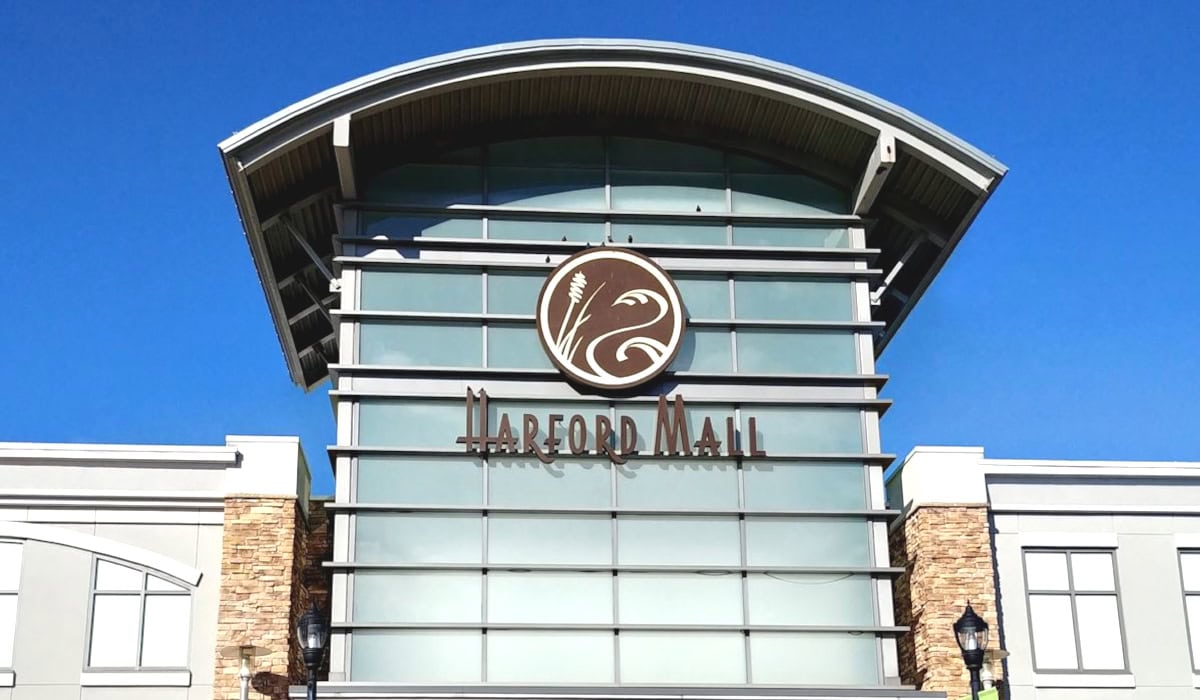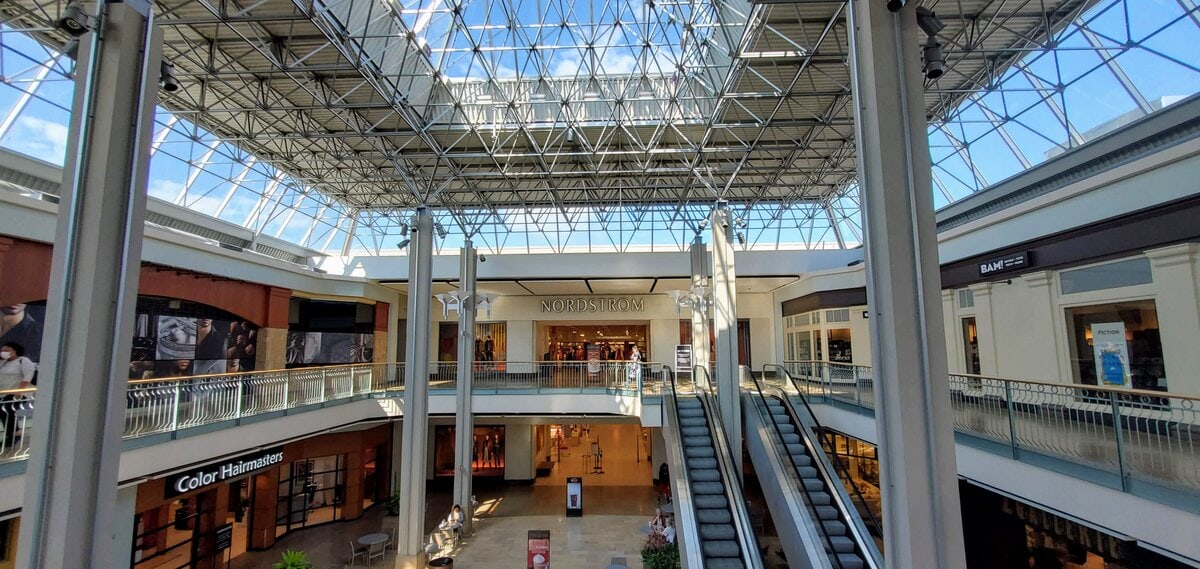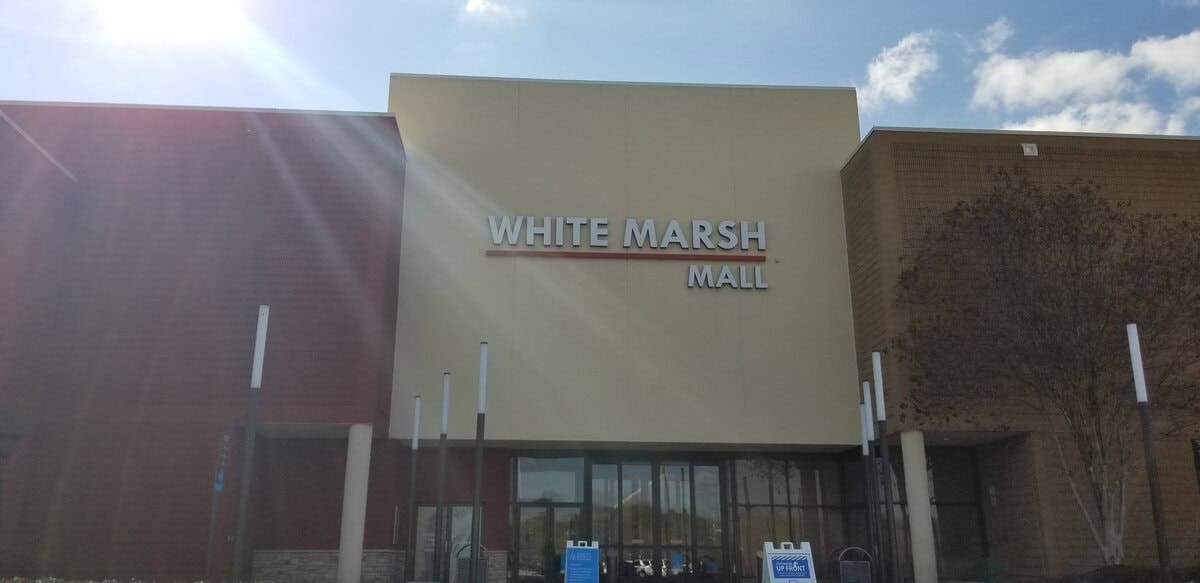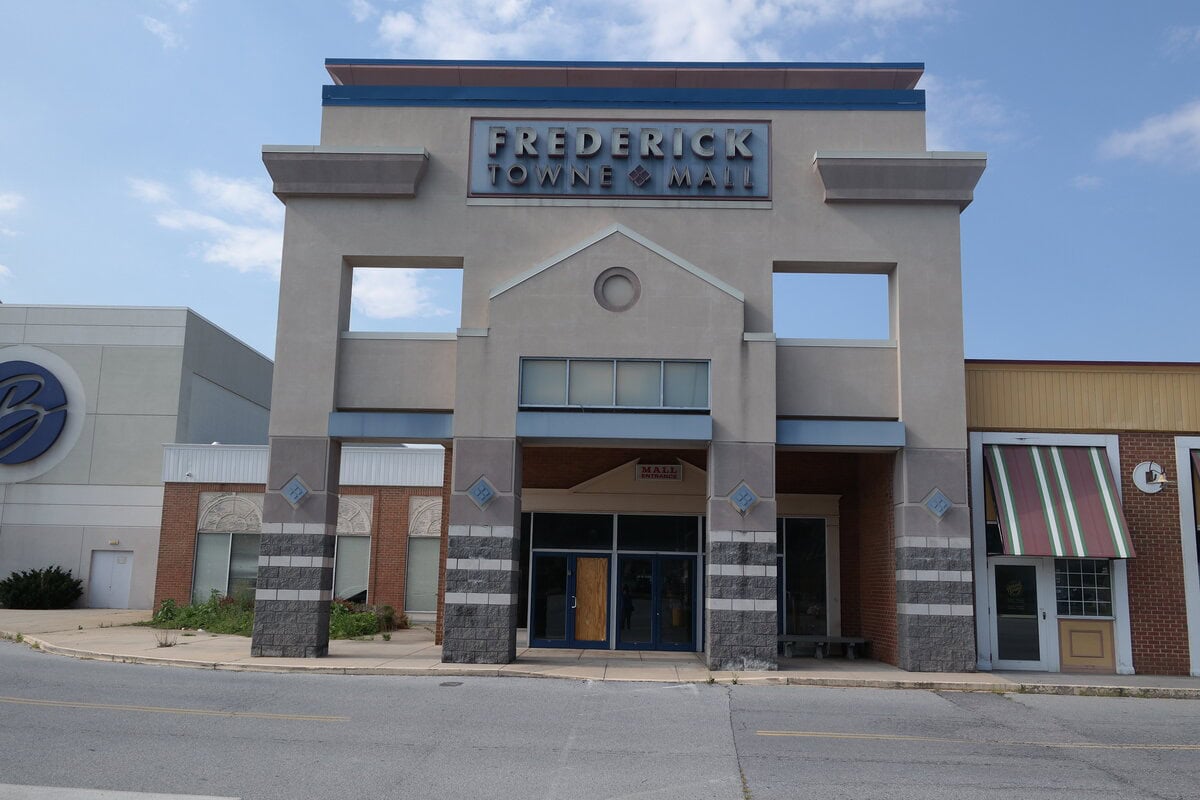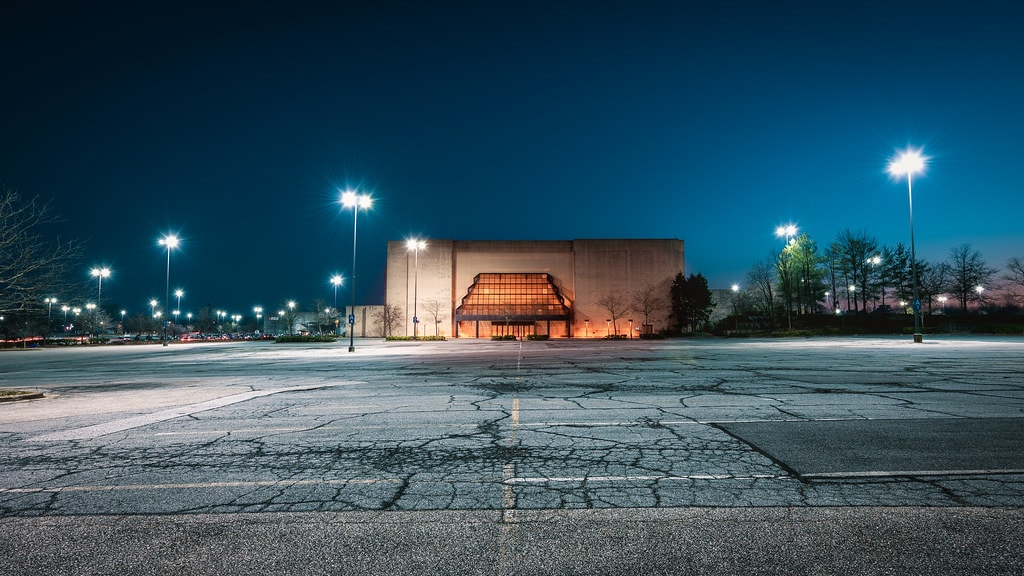The Mall That Promised Everything
Owings Mills Mall opened with every intention of being the retail jewel of Baltimore County.
The name still sparks memories for many Marylanders who watched it rise from sketch to skyline. It was going to be upscale, spacious, and ahead of its time.
In 1986, it was all that. The place had Saks, Bamberger's, Hecht's - a trio meant to pull from every corner of the metro. Things to do in Owings Mills, Maryland, once included walking on its polished floors.
Buildout and Leasing Strategy (1981-1986)
Owings Mills Mall started on paper in 1981, announcing in vague terms that it would compare its eventual scale to White Marsh Mall.
By late 1983, the developers had picked a season - summer 1986 - and firmed up their anchor plan.
Saks Fifth Avenue, Bamberger's, and Hecht's would set the tone.
All three were confirmed in 1984. The Rouse Company, known for Columbia Mall and Harborplace, managed the development.
Construction moved fast. By July 30, 1986, the mall opened with 95 percent of its space leased and about 80 percent of stores ready for business.
The opening lineup leaned heavily into mid- to high-end national brands.
That helped draw traffic early on, especially with limited competition in the northwest suburbs of Baltimore.
The site had been earmarked by Baltimore County as a future growth zone as early as 1979.
Rouse intended to mirror its Columbia Town Center model - retail as the anchor, with housing and offices in orbit.
The original design called for a man-made lake at the center of the site.
That changed after the Army Corps of Engineers raised environmental concerns.
Runoff and habitat disruption led them to deny approval, and the lake was removed from the plan.
The mall's layout and placement still made access relatively smooth.
Located near the Red Run Boulevard exit of I-795, the site offered both visibility and commuter access.
These were deliberate choices.
The idea was that Owings Mills would pull shoppers north of the Beltway, away from older malls closer to Baltimore City.
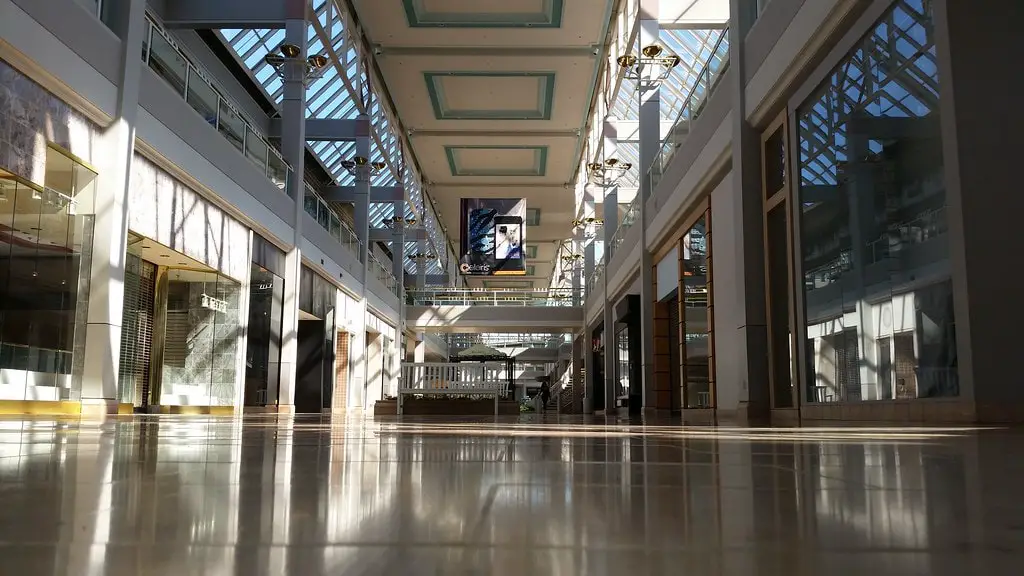
Transit Links and Security Fallout (1987-1992)
The Baltimore Metro Subway extension reached Owings Mills in 1987, a year after the mall opened.
A short shuttle route ran between the Metro station and the mall on a loop that took about ten minutes.
It was a basic connection, but it worked. Riders could exit the train and be dropped off at the shopping center without hassle.
Then, in June 1992, the shuttle service was canceled.
Once the shuttle disappeared, options narrowed. Buses ran less frequently, every 30 to 60 minutes, and the remaining route was impractical for most.
A one-mile pedestrian path still connected the mall to the station.
The path cut through vegetation, down a hill, and into the Metro lot.
It was passable, though far from welcoming. By fall, that changed.
On September 25, 1992, Christina Marie Brown was found along that path.
She had left her job cleaning inside Saks Fifth Avenue only ten minutes earlier.
Reports from that day indicated robbery as the motive.
Her purse, which contained $120, was gone. The path was closed two months later, on November 25. Public reaction was immediate.
Coverage from local outlets focused heavily on safety, and over time, a wider perception formed that Owings Mills Mall was unsafe, even for midday trips.
By 1997, the Maryland Transit Administration added more bus routes to improve access between the station and the mall.
But the damage to public perception had already taken root.
The closed path never reopened, and foot traffic from the Metro station never fully recovered.
Tenant Churn and Market Retreat (1993-2008)
Saks Fifth Avenue, one of the original draws, left in 1996.
JCPenney took the space, but the replacement was more functional than flashy.
Around that same time, other Baltimore-area malls, Towson Town Center in particular, were expanding and pulling from similar demographics. Towson added a Nordstrom in 1991.
Rouse bought Towson Town Center outright in 1998, putting more attention behind its other asset while Owings Mills was already showing wear.
A brief push to stay relevant came with the 1998 expansion. Sears and Lord & Taylor joined the anchor lineup.
Those additions, though, didn't hold. Sears shut down in 2001. Lord & Taylor closed a year later.
Temporary fixes followed. A furniture store called Stix n' Stuff moved into the old Sears space but left by 2004.
The structure was demolished shortly after to make way for housing.
International Furniture Liquidators took over the former Lord & Taylor spot but didn't last either.
Retail turnover became the pattern. Macy's took over Hecht's in 2006, which led Boscov's to move into Macy's old location.
That arrangement barely lasted two years. In 2008, Boscov's filed for Chapter 11 bankruptcy and closed ten stores, including Owings Mills among them.
That left two anchors: Macy's and JCPenney.
By the late 2000s, vacancies were climbing. National tenants disappeared, and regional players hesitated to enter.
Owings Mills Mall had once offered 155 storefronts.
As leases ended and traffic declined, many spaces stayed dark, even during peak seasons.
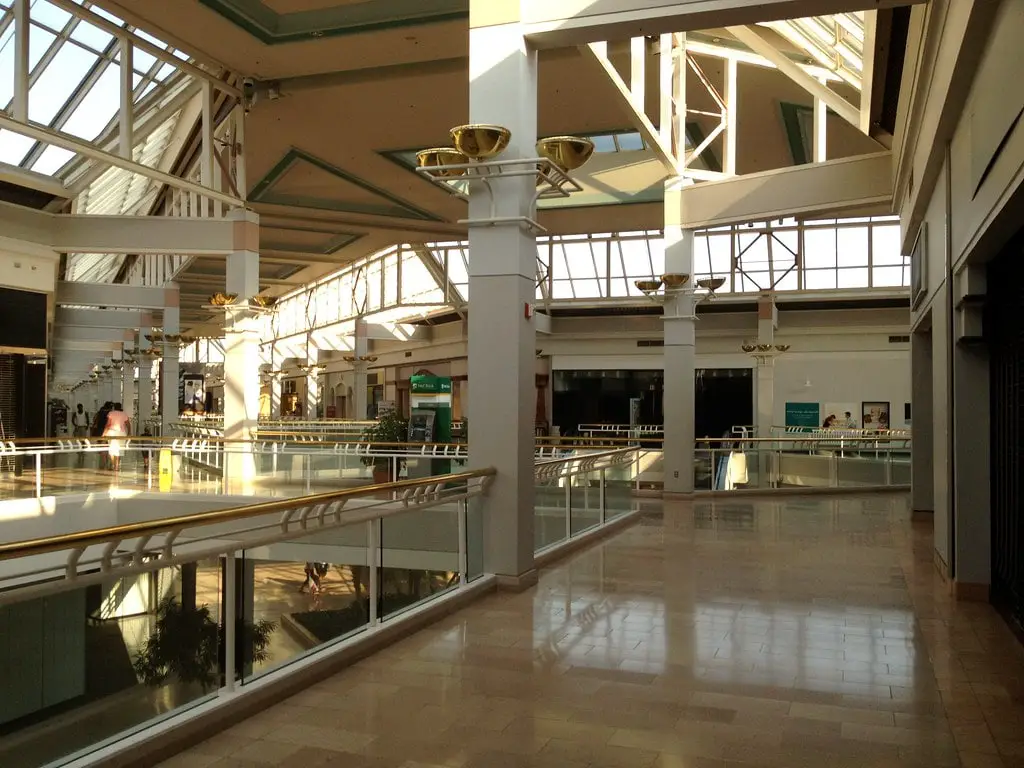
Retail Collapse and Full Asset Liquidation (2009-2017)
By October 2010, the mall's vacancy rate had climbed to 22 percent.
The data came at a time when foot traffic had slowed to a crawl, and few new tenants were willing to commit.
National retailers were passing on Owings Mills in favor of newly remodeled options across the region.
Local press began floating redevelopment scenarios by 2011.
There were ideas to raze the mall entirely and replace it with an outdoor shopping center by 2014. That didn't happen on schedule.
No sales reports were published. But if you asked brokers or shopkeepers nearby, they'd tell you traffic had fallen hard.
The restaurants and AMC theater still pulled visitors, which made the empty mall behind them stand out even more.
The final blow came in late September 2015. The main interior of the mall is closed to the public.
Macy's followed two months later, ending its operations in November.
On January 13, 2016, JCPenney announced that it would shutter its Owings Mills location in the spring. The closure took effect on April 8.
An auction was held in March 2016 to liquidate fixtures and remaining interior assets.
Then demolition crews arrived. Work began in August, and by March 2017, the entire structure was gone.
Every remaining square foot of the enclosed mall had been stripped, cleared, and leveled for reuse.
Repositioning and Ground-Up Redevelopment (2017-2019)
On December 5, 2017, Kimco Realty announced plans to redevelop the site as Mill Station.
This time, the pitch centered on open-air shopping and large-format retail.
The project would cover 575,000 square feet and carry a projected cost of $108 million.
Initial tenants included Costco, Lowe's, and Dick's Sporting Goods.
Altogether, the site was planned to support at least 30 occupants, including restaurants and soft goods chains.
Construction started in early 2018, using a phased rollout.
Costco was the first anchor to open, starting operations in October of that year.
Lowe's followed, opening to the public in January 2019.
The AMC Theatres building, left standing during demolition, underwent a full interior and exterior remodel.
The buildout strategy focused on surface accessibility, clear sightlines, and pad-ready plots.
Leasing brochures marketed the site's location next to I-795 and emphasized its connection to Metro Centre at Owings Mills, a separate mixed-use development nearby.
That made Mill Station a part of a larger push to reboot the commercial corridor using transit access and fresh construction.
Owings Mills Restaurant Park, which had opened in 1998 adjacent to the old mall footprint, remained operational through the transition.
Its tenants - including Red Lobster and Olive Garden - gave the new development a built-in food base.
From a retail real estate standpoint, Mill Station represented a complete reset.
No legacy tenants were retained. The site's identity was fully rebranded.

🍀

